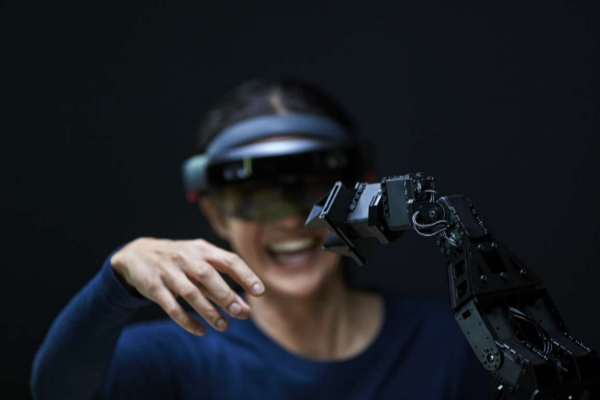The so-called internet of things, the next intensification of the connections between objects, leads us to think about a future detached from people. Is that not the case. Technologies such as artificial intelligence and concrete developments such as virtual reality will pave the way for the extension of the new internet of the senses. The definitive implementation of 5G, a mobile communications standard that will achieve transmissions with less latency or delay, as well as greater data volume, will determine the expansion of those networks.
A study compiles the trends of consumption to 10 years seen and summarizes them in a concept: the internet of the senses, within "a world in which all human senses are digitized". That is to say, in addition to sight and hearing, habitual protagonists, respondents trust that taste, smell and touch are perfectly integrated into the online connections of the year 2030. The report, prepared by Ericsson Consumer & IndustryLab, reflects expectations and predictions 46 million pioneer users in the adoption of new technologies.
"Today, technology interacts mainly with two senses: sight and hearing," recalls EL MUNDO Guillermo Quintana, director of mobile broadband at Ericsson Spain, who, in view of the research results, predicts: "The technology will enable a complete internet of the senses by 2025 and will include the ability to digitally communicate thinking by 2030 ".
"It seems science fiction, but you only have to go back a decade ago, to the era of 3G, and there would be no Uber, Airbnb, Spotify ...", recently reviewed José Antonio López, CEO of Ericsson in Spain.
Advances would affect senses usually eclipsed by sight and hearing. For example, consumers predict the appearance of oral devices that allow any food ingested to be tasted as desired . In addition, 44% of consumers expect that in 2030 there will be access to taste memories and 38% that flavors can be shared with friends.
Respondents rely on a refinement of tactile experiences, which to date are limited to a handful of features, such as the vibration of controls and controllers for some video games. The report tells how six out of 10 consumers consulted believe that in 10 years mobile phones will be able to reproduce shapes and textures on their buttons and icons.
Smell would also not come to the forefront either. 60% of consumers expect by 2030 the emulation of aromas from, for example, fields and forests, increasingly distant from a connected but eminently urban citizenship. "56% expect by 2030 to be able to perceive digitally all the smells in the movies they watch," Quintana emphasizes.
The latest advances
As with smell or taste, imitation is seen as a natural evolution for thriving voice assistants , a market in which Amazon, with Echo and Alexa, is the leader. 67% of respondents have the ability to reproduce the voice of other people accurately, thanks to the use of a conditioned microphone. Ericsson's research also includes the digital creation of bubbles that would be used to isolate themselves from unwanted sounds in noisy places such as public transport.
The voice and the ear would continue to develop in the technological field, of course, an accentuated process in recent years - a few days ago, Google announced that its personal assistant will soon be able to read pages aloud.
Of course, the commercial performance of all these options will be essential to make them viable. Thus, 45% of respondents believe that shopping centers will be digitized in 2030 to the point of allowing the use of the five senses when buying products or services. Protection, however, should be extreme: " Our senses may be manipulated to buy items or services," warns Michael Björn, director of the research agenda at Ericsson Consumer & IndustryLab.
The brain as an interface
Among the consumption trends included in the report, is that the navigation interface is located in the human brain, so that the routes are virtual and mere thought guides navigation. The overturn, if materialized, would mean the end of keyboards, mice and screens . "As an example, six out of 10 respondents expect that, just thinking of showing a map " a map will appear right in front of their eyes, "says Quintana.
According to the criteria of The Trust Project
Know more- Amazon
- Internet
- 5G telephony
Tricks Does your Wifi go slow and fail? So you can fix it
InternetThese youtubers children earn more money than soccer players
Gadgets The Google Nest Mini cannot be asked for more

